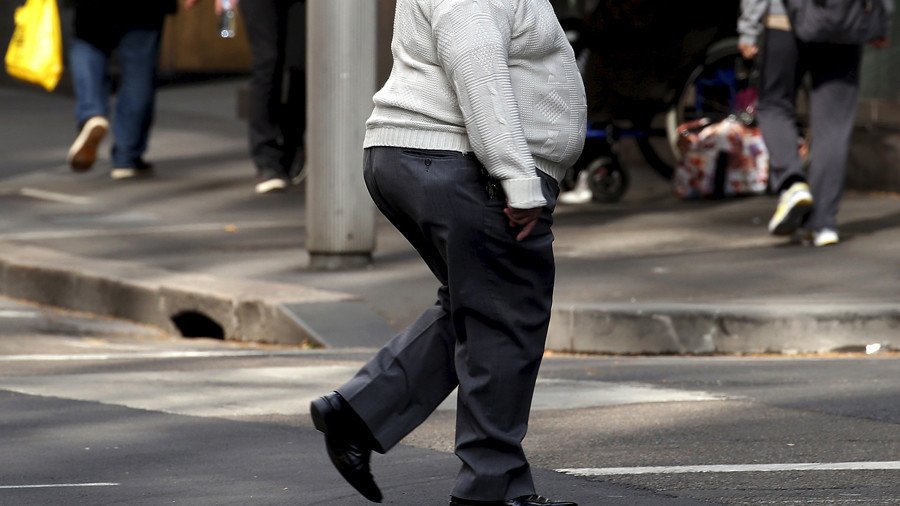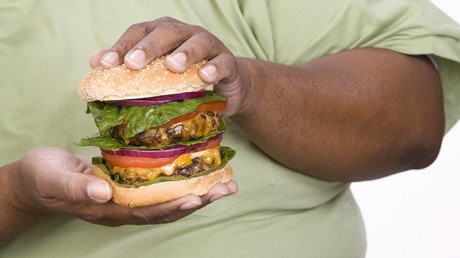Fatpocalypse: Is rising obesity contributing to America’s poor Olympic performance?

Now that the Olympic torch in PyeongChang has been extinguished and the athletes and fans have gone home, the US is wrestling with its worst performance in 20 years. Could obesity rates be taking a toll on US athletic performance?
On the surface, Team USA’s total haul of 23 medals, which included nine golds, seems rather respectable. It put the United States in fourth place, behind Norway, Germany and Canada. But not everyone went home satisfied, and least of all the US Olympic Committee, which had predicted US athletes would win at least 37 medals.
Not only were the Americans bested by three countries which, combined, make up just one-third of the US population (Norway, which won 39 gold medals in PyeongChang, has just 5.2 million people), it was their worst performance since the 1998 Nagano Games. The situation looks even more troubling when we consider that the US fielded 242 athletes at PyeongChang, the largest-ever delegation in the history of the Winter Games.
The US has been spending wads of cash in an effort to get the most from its athletes. The amount forked over to Winter sports in the years 2015-16 increased by nearly six percent from the previous Olympic 2011-2012 cycle, AP reported. Alas, all that extra cash has produced little in way of gold. Since the 2010 Vancouver Games, America’s total medal haul in the Winter Games has been on the decline (37, 28 and 23, respectively).
“We have this amazing depth. We have these incredible medalists,” Alan Ashley, US chief of sport performance told reporters following the closing ceremony. He then ventured the question: “How do we continue to compete even at a higher level and give them what they need going forward?”
What is the source of this decline? Since it does not seem related to a lack of funding, or a shortage of potential athletes, could there be particular sociocultural reasons at play, for example particular health factors? As was already acknowledged by the US government back in 2012, when it partnered with Olympic and Paralympic athletes to get more than 1.7 million children involved in sports through Michelle Obama’s "Let's Move!" initiative, obesity is a serious issue that is only getting worse.
A recent study put out by the OECD predicts that by the year 2030, almost 50 percent of Americans will be considered as clinically obese. In 13 states, that number could actually exceed 60 percent.
While there seems to be little research to date on the subject, a 2016 policy paper put out by the American Development Model (ADM) in cooperation with the US Olympics Committee (USOC) suggests that America’s sporting officials are aware of the problem when it warned: “The percentage of obese children ages 6-11 increased from 7 percent in 1980 to 18 percent in 2010. Among children ages 12 to 19, that figure grew from 5 percent to 18 percent.” The paper goes on to detail how parents, schools and sporting clubs can alter their lifestyles and dietary choices to become better athletes.
German journalist questions Norway’s Olympic success over possible ‘asthma meds abuse’ https://t.co/sXuTMwoFHDpic.twitter.com/z0AS3Pr5y2
— RT (@RT_com) February 24, 2018
Another study, published in the Journal of the Academy of Nutrition and Dietetics (2003), looked at the heights and weights of 1,749 athletes participating in the Special Olympics Games in 1999 and 2001. They were measured, and body mass index (BMI) was computed. The study indicated that “athletes from the United States under 18 years of age had a significantly higher prevalence of being overweight or at risk of being overweight compared with athletes from other countries. Similarly, adult athletes from the United States were at least 3.1 times more likely to be overweight or obese compared with their non-US counterparts.”
“The risk of obesity in US Special Olympic athletes parallels the prevalence of obesity in the general US population,” it said. “There is a clear need for further research, surveillance, and treatment of the risky health behaviors that contribute to the development of obesity in this group.”
New record set at Winter Olympics, but it's not about sport... https://t.co/mYINAQVVYT#PeyongChang2018
— RT (@RT_com) February 17, 2018
Meanwhile, the US military has been complaining about the quality of its new recruits for many years now. Beginning in the late 1990s, the various branches of the military noticed that a “growing number of potential recruits…could not be accepted because they were too fat, too unfit in general,” according to StrategyPage, a website devoted to military issues.
Can the world of American sports expect to remain insulated from the obesity epidemic? It seems highly doubtful.
According to the latest survey from the Organization for Economic Cooperation and Development (OECD), the obesity rate for American adults (aged 15 and over) clocked in at an astounding 38.2 percent, by far the highest rate in the world (by comparison, Japan ranked the skinniest country, with just 3.7 percent of the population obese; Russia features around the mid-range with a 19.6 percent rate).
On average, 19.5% of adults are #obese across OECD countries. See where your country weighs in https://t.co/0rAdWjng8N PDF #health#EOD2017pic.twitter.com/07QxLPYtB9
— OECD (@OECD) May 18, 2017
It needs to be noted that the US still manages to dominate the Summer Games, particularly in track & field and swimming. Indeed, since 1896, US athletes have won a total of 2,522 medals (1,022 of them gold) at the Summer Olympic Games. The question, however, is whether the US Winter and Summer Olympic teams can continue in their winning ways at the same time the average American is packing on extra poundage. That may be the greatest challenge for the United States in the years to come: how to maintain a competitive edge when some 50 percent of adults will be obese in just over a decade.
Excessive eating, however, is not the only problem. When you combine the unprecedented rise in US obesity rates, with an increasingly sedentary, urbanized lifestyle where children prefer to sit in front of a computer or television for hours on end instead of engaging in sporting activities, you have a recipe for a disaster of Olympic proportions.
Relying on data from the Centers for Disease Control’s National Health and Nutrition Examination Survey (NHANES), researchers from Stanford University’s School of Medicine showed that between 1988 and 2010, females who reported not engaging in physical activity surged from 19 percent to 52 percent. For males, the figures were no less dramatic, going from 11 percent to 43 percent.
During that same period, obesity rates soared from 25 to 35 percent among women and from 20 to 35 percent among men.
Meanwhile, the healthcare cost for providing care for those suffering obesity is estimated from $147 billion to nearly $210 billion per year. This is an 'infrastructure' crisis no less worrisome than America's collapsing roads and bridges.
Of course this is not a problem that only afflicts the United States. Many other countries are also experiencing early signs of this epidemic. However, judging by the latest statistics - not to mention visual evidence - the US has suffered the most direct consequences from such a lifestyle choice.
In light of these shocking developments, can America really expect to have enough healthy youth to transform into Olympic superstars? It seems that sooner or later this national epidemic will come to play a determining factor in whether or not the United States can hold onto its share of the Olympic market. Nothing less than gold is at stake.
Think your friends would be interested? Share this story!
The statements, views and opinions expressed in this column are solely those of the author and do not necessarily represent those of RT.

















